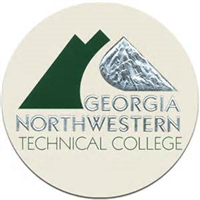What do they do?
Install, dismantle, or move machinery and heavy equipment according to layout plans, blueprints, or other drawings.
Also known as:
Maintenance Millwright, Millwright, Millwright Business Representative, Precision Millwright
-
2.4%
Change
Ranks #30 in job growth rate230Job Openings
Ranks #4 in net job growth
Looking for colleges that offer a specific major? Use the College Match Tool to find your best-matched schools and discover your estimated Net Price!
- High school diploma equivalent (43%)
- Some college, no degree (31%)
- Associate's degree (13%)
- Less than high school diploma (8%)
- Bachelor's degree (4%)
- Master's degree (1%)
- Doctorate or Professional Degree (<1%)
People in this career often have these skills:
- Operations Monitoring - Watching gauges, dials, or other indicators to make sure a machine is working properly.
- Installation - Installing equipment, machines, wiring, or programs to meet specifications.
- Equipment Maintenance - Performing routine maintenance on equipment and determining when and what kind of maintenance is needed.
- Critical Thinking - Using logic and reasoning to identify the strengths and weaknesses of alternative solutions, conclusions, or approaches to problems.
- Troubleshooting - Determining causes of operating errors and deciding what to do about it.
- Repairing - Repairing machines or systems using the needed tools.
- Operation and Control - Controlling operations of equipment or systems.
- Quality Control Analysis - Conducting tests and inspections of products, services, or processes to evaluate quality or performance.
- Time Management - Managing one's own time and the time of others.
People in this career often know a lot about:
- Mechanical - Knowledge of machines and tools, including their designs, uses, repair, and maintenance.
- Mathematics - Knowledge of arithmetic, algebra, geometry, calculus, statistics, and their applications.
- Design - Knowledge of design techniques, tools, and principles involved in production of precision technical plans, blueprints, drawings, and models.
- Building and Construction - Knowledge of materials, methods, and the tools involved in the construction or repair of houses, buildings, or other structures such as highways and roads.
- English Language - Knowledge of the structure and content of the English language including the meaning and spelling of words, rules of composition, and grammar.
- Education and Training - Knowledge of principles and methods for curriculum and training design, teaching and instruction for individuals and groups, and the measurement of training effects.
- Public Safety and Security - Knowledge of relevant equipment, policies, procedures, and strategies to promote effective local, state, or national security operations for the protection of people, data, property, and institutions.
People in this career often have talent in:
- Manual Dexterity - The ability to quickly move your hand, your hand together with your arm, or your two hands to grasp, manipulate, or assemble objects.
- Finger Dexterity - The ability to make precisely coordinated movements of the fingers of one or both hands to grasp, manipulate, or assemble very small objects.
- Control Precision - The ability to quickly and repeatedly adjust the controls of a machine or a vehicle to exact positions.
- Arm-Hand Steadiness - The ability to keep your hand and arm steady while moving your arm or while holding your arm and hand in one position.
- Multilimb Coordination - The ability to coordinate two or more limbs (for example, two arms, two legs, or one leg and one arm) while sitting, standing, or lying down. It does not involve performing the activities while the whole body is in motion.
- Near Vision - The ability to see details at close range (within a few feet of the observer).
- Information Ordering - The ability to arrange things or actions in a certain order or pattern according to a specific rule or set of rules (e.g., patterns of numbers, letters, words, pictures, mathematical operations).
- Visualization - The ability to imagine how something will look after it is moved around or when its parts are moved or rearranged.
- Problem Sensitivity - The ability to tell when something is wrong or is likely to go wrong. It does not involve solving the problem, only recognizing that there is a problem.
- Static Strength - The ability to exert maximum muscle force to lift, push, pull, or carry objects.
- Trunk Strength - The ability to use your abdominal and lower back muscles to support part of the body repeatedly or continuously over time without "giving out" or fatiguing.
- Extent Flexibility - The ability to bend, stretch, twist, or reach with your body, arms, and/or legs.
- Oral Comprehension - The ability to listen to and understand information and ideas presented through spoken words and sentences.
- Oral Expression - The ability to communicate information and ideas in speaking so others will understand.
- Deductive Reasoning - The ability to apply general rules to specific problems to produce answers that make sense.
- Inductive Reasoning - The ability to combine pieces of information to form general rules or conclusions (includes finding a relationship among seemingly unrelated events).
People in this career often do these activities:
- Adjust the tension of nuts or bolts.
- Position equipment using hand tools, power tools, or heavy equipment.
- Level machines or equipment.
- Align equipment or machinery.
- Assemble mechanical components or machine parts.
- Communicate with coworkers to coordinate installations or repairs.
- Lubricate equipment to allow proper functioning.
- Maintain work equipment or machinery.
- Adjust equipment to ensure optimal performance.
- Replace worn, damaged, or defective mechanical parts.
- Bolt objects into place.
- Operate welding equipment.
- Drill holes in parts, equipment, or materials.
- Lay out work according to specifications.
- Operate heating or drying equipment.
- Move materials, equipment, or supplies.
- Operate cranes, hoists, or other moving or lifting equipment.
- Dismantle heavy equipment or machinery.
- Fabricate parts or components.
- Repair worn, damaged, or defective mechanical parts.
- Install programs onto computer or computer-controlled equipment.
- Troubleshoot equipment or systems operation problems.
- Test mechanical equipment to ensure proper functioning.
- Grind parts to required dimensions.
This page includes data from:

 Occupation statistics: USDOL U.S. Bureau of Labor Statistics Occupational Employment Statistics
Occupation statistics: USDOL U.S. Bureau of Labor Statistics Occupational Employment Statistics
 Videos: CareerOneStop, USDOL/ETA and the Minnesota Department of Employment & Economic Development
Videos: CareerOneStop, USDOL/ETA and the Minnesota Department of Employment & Economic Development













